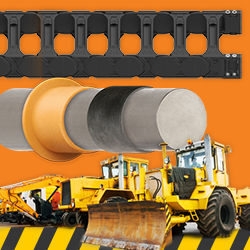HYBRID LIGHTING STRATEGIES: ADVANTAGES, DISADVANTAGES AND GETTING STARTED

Research on the ideal lighting for greenhouse cultivation reveals a fundamental truth: LED systems are far more efficient and effective than their HPS counterparts.
However, not all cultivators can afford to discard their functional HPS lighting system for an immediate and full LED retrofit. For many, the most sensible solution is a hybrid lighting system that retains existing HPS lighting to improve affordability while introducing LEDs to critical locations
But are hybrid systems functional? Yes, if done well. Let’s look at some benefits and limitations of a hybrid lighting strategy:
Incremental change
A hybrid system can be beneficial for several reasons. Most notably, a partial LED integration reduces up-front capital expenses. Additionally, the ability to integrate LED fixtures in every other lamp circumvents costly electrical renovations and eliminates the need to rewire your system completely.
Adjusting heating for LED efficiency
Compared to HPS lamps, LEDs produce far less by-product heat, making them ideal for crops and harvesting in the summer months. During the winter months, however, supplemental heating may be necessary to offset the low LED by-product heat..
In such cases, a hybrid approach might be the first step in a larger retrofit roadmap, as growers can reap the benefits of LEDs in certain areas without a complete overhaul of the heating system.
This option delivers to growers a newfound ability to use LEDs when HPS lighting would be detrimental plus potential savings on renovations that would otherwise be necessary when decoupling light from heat in totality.
Improved spectrum control
Improved spectrum control is another notable benefit of a hybrid lighting strategy. Many cultivators require specific wavelengths—such as blue light—during months when sunlight may be lacking. But HPS lighting systems simply can’t deliver blue light. LEDs can be used to complete your desired spectrum. By introducing blue light, that is, LEDs can induce compact growth while retaining HPS fixtures.
Red or far red light can be helpful for cultivators who wish to promote fruiting. A narrow-band LED that incorporates both strong blue and red wavelengths offers an energy-efficient way to supplement existing HPS light fixtures and reach desired traits.
If you plan on replacing HPS fixtures with LEDs, your first inclination might be to adopt a narrow-band LED strategy. In this phase of planning, research is critical to guarantee projected profitability. Just because narrow spectra lighting may be similar to HPS systems, it isn’t always the best option. Research shows that a broad spectrum can significantly improve yield and morphology in a variety of crops and cultivars, including cannabis, cucumbers, lettuce, tomatoes and others. Every crop and cultivar is unique and responds differently to various spectra, making it all the more critical that growers are led by science and receive expert consulting to assess the best fixtures for their unique cultivation conditions.
Location. Location. Location. Region, climate, and DLI are all important factors to consider as a grower. For instance, in areas where natural light levels are low during winter, narrow-band spectra can neglect important wavelengths that most crops require to thrive.
Fortunately, Fluence works closely with both growers and scientists to ease these concerns and ensure best practices.
Develop your ideal lighting system with Fluence
You don’t have to switch fully to an LED system in order to reduce by-product heat and energy waste. A complete LED retrofit may be ideal for some cultivators, but it doesn’t make financial sense for all. Luckily, a hybrid strategy can be an excellent stepping stone to a longer-term business model or retrofit.
Comments (0)
This post does not have any comments. Be the first to leave a comment below.
Featured Product

